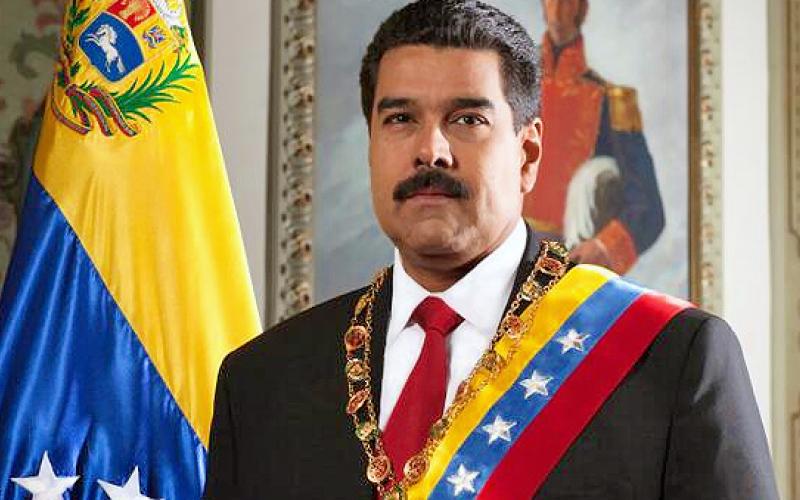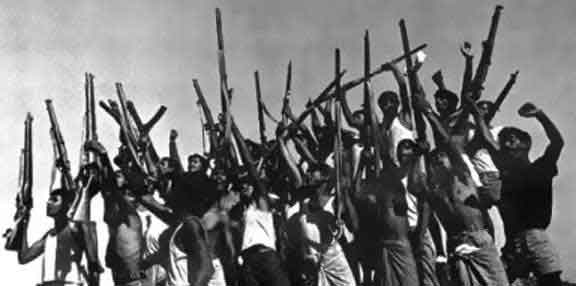ROAD rage in Bangladesh is not new. And not new is death due to road
rage. The new phenomenon is the student spirit has stood against road
rage. To the students, life matters.
A movement against road rage has recently been carried on by the students in Dhaka. They stood for life. And they stood against disregard to life.
It was anarchy in a part of roads. The students opposed that anarchy. It was dominance of lumpen culture and practice in a part of roads. The students opposed that part of the lumpen culture and practice. The students standing for life sent a powerful message to all concerned or to-be-concerned. They served society — a thankful job.
Total inconsideration to ordinary people is not new in profit-powered economy. There is no scope for the Bangladesh economy to go ‘awry’ of this path — ignore the interest of ordinary people.
Roads are one profit-friendly area in a profit-driven economy. The consequence: the people passing the paths — millions in number every day — pay price heavily. Profit-hungry roads turn cruel under the mastership of crudely-earned capital. All, an entire society — from tax payers to tax controllers, from petty traders to politicians, from day-labourer, private car driver and driver’s daughter of to film director, from pupil to policeman, from children to octogenarian — turn victims of this arrogance-filled neo-capital.
‘Lion’s share’ in the death-market on Bangladesh roads is of the ordinary people, and especially of the poor. A look into class composition of the deaths in road accidents shows the fact. Mostly, the dead in road accidents are low-earning members of society. The affected families are in the lower strata of society. Is it that the road deaths love the low-earning people?
And, strangely, it is the ordinary people who collectively pay the most part for the roads. It is the ordinary people who keep the wheels of profit running on the roads. It is the fact seen from any angle: whether from the angle of source of profit gathered from roads or from the angle of payments made by the public.
It is a strange ratio: death market on roads and payment for roads! The ordinary people are the biggest payers in terms of life and in terms of money. Or, they make payment with their money and they are paid back by their lives taken away. It seems the more the ordinary people pay with money the more they are paid back with death!
The stories of road deaths or deaths under wheels, in any way one likes to name the deaths, are known to all. Media reports are evidences. It has many descriptions: high speed, reckless driving, mechanical failure, damaged road, broken bridge railings, rules ignored, overburdened either with passengers or with goods, fatigued driver, inefficiency, lack of training, and a few more including role of organisations claiming to be unions. A deeper look will find wrong design, lax in enforcement, and super-greed — scoop most possible money within shortest possible time. A further look will find management problem. A further look will find disregard life.
Problem is not with the transport labour. Nor is the problem the owner. The same labour will behave in a different way, in a responsible way, in a considerate way in a different circumstance, in a different atmosphere. Labour is not anti-people. Nor it is killer-friendly. Labour has no contradiction with the student community, not with citizens. There is no reason to consider labour anti-student, anti-public. A labour-student contradiction only serves that part of capital, which is in an anarchic spree.
The same owner will behave in a different way in another situation. Owners go for money all over the world. But that does not mean that they are motivated to kill.
It is a circumstance — amalgamation of many factors — that creates a situation with particular tilt. A circumstance grows in strength and overwhelms all around. Road rage, to put it in a simple way, has, thus, grown brutal, taking lives, many lives, lives of ordinary people. It has taken an anarchic appearance.
Road rage is spread over, broadly, all around the country. A classification of the spread out problem will find — village paths tax lives least; lazy roads are lazy in driving death; the more the speed the more the death, the more the power the more the disregard. And, it is the poorer the weaker.
It is a mismatched reality with all disproportions: the poor, the powerful, the speedier, the disregard, the rules, the slack.
These are known to all. These are old observations. These are tiring narrations. These are clichés.
The anarchic situation does not help politicians. Neither does it help production. Ultimately, its the people that suffer, it is production that gets hampered. And, politicians face awkward situation with possibility of deterioration, a serious deterioration, which opens path to further play by others.
The new development is the student spirit — standing for life, defending life. It is anchored in the history of student activism in Bangladesh. The history begins from the days of colonised Bangladesh: Students riding revolutionary road to overthrow colonial rulers. The days under the Pakistan rule blazed with student activism. The independent Bangladesh also found that the student community is not short of activism and martyrs.
All these student activism conveyed messages. The messages were noticed by a group while ignored by another. Lost was the ignorant group.
Student organisations were the organisers in all student activism during the Pakistan period. The school students’ movement opposing a book — Pakistan, Desh O Krishti – in the post-1969 uprising days also had indirect or distant presence of student organisations.
The movement, generally identified as desh o krishti andolin (movement), was significant as it was opposing the ideology the state was formally trying to impose on young learners. The Pakistan state had to retreat. The book, prescribed for the secondary level, was withdrawn. A few months later, the Bengalis stood for their liberation through an armed struggle, which was widely joined in by students from middle and lower strata of society.
The Bangladesh students gained trust and love of the Bengali people through their years of activism since 1948. The activism centred, basically and broadly, on people’s interests. A part of this love and trust gathered rust resulting from a number of mal-activism or counter-activism — a loss for people’s interest, but a gain for anti-people camp.
The anti-road rage movement bared parts of a reality encompassing the state and people. There was the question of responsiveness of the students and the state machine and attitude of the people. The students’ response was instant. Parts of the state responded very quickly; and the response was positive. Hostility to each other was absent as the state machine was not standing opposed to the protesting students, unusual signals from both sides, which need to be deciphered.
A major question remains to be solved: the role of student organisations. The question carries within it a few more questions, answer to which will reflect the state of the overall and of different parts of student activism. Any observer will look into the outburst: its speed and extent, and the element powering it. Student organisations can take responsibility to stop all possibilities of deteriorating to anarchy. These organisations can stop play by provocateurs with some other agenda.
Anarchy will harm all — the people, production, political atmosphere and politicians. The move for safe roads will get harmed with anarchy. And the student spirit vibrant on Dhaka roads will lose face if anarchy sets in. The honour the protesting students from schools and colleges are gaining will get lost if anarchy steps in. So, that should not be allowed.
A movement against road rage has recently been carried on by the students in Dhaka. They stood for life. And they stood against disregard to life.
It was anarchy in a part of roads. The students opposed that anarchy. It was dominance of lumpen culture and practice in a part of roads. The students opposed that part of the lumpen culture and practice. The students standing for life sent a powerful message to all concerned or to-be-concerned. They served society — a thankful job.
Total inconsideration to ordinary people is not new in profit-powered economy. There is no scope for the Bangladesh economy to go ‘awry’ of this path — ignore the interest of ordinary people.
Roads are one profit-friendly area in a profit-driven economy. The consequence: the people passing the paths — millions in number every day — pay price heavily. Profit-hungry roads turn cruel under the mastership of crudely-earned capital. All, an entire society — from tax payers to tax controllers, from petty traders to politicians, from day-labourer, private car driver and driver’s daughter of to film director, from pupil to policeman, from children to octogenarian — turn victims of this arrogance-filled neo-capital.
‘Lion’s share’ in the death-market on Bangladesh roads is of the ordinary people, and especially of the poor. A look into class composition of the deaths in road accidents shows the fact. Mostly, the dead in road accidents are low-earning members of society. The affected families are in the lower strata of society. Is it that the road deaths love the low-earning people?
And, strangely, it is the ordinary people who collectively pay the most part for the roads. It is the ordinary people who keep the wheels of profit running on the roads. It is the fact seen from any angle: whether from the angle of source of profit gathered from roads or from the angle of payments made by the public.
It is a strange ratio: death market on roads and payment for roads! The ordinary people are the biggest payers in terms of life and in terms of money. Or, they make payment with their money and they are paid back by their lives taken away. It seems the more the ordinary people pay with money the more they are paid back with death!
The stories of road deaths or deaths under wheels, in any way one likes to name the deaths, are known to all. Media reports are evidences. It has many descriptions: high speed, reckless driving, mechanical failure, damaged road, broken bridge railings, rules ignored, overburdened either with passengers or with goods, fatigued driver, inefficiency, lack of training, and a few more including role of organisations claiming to be unions. A deeper look will find wrong design, lax in enforcement, and super-greed — scoop most possible money within shortest possible time. A further look will find management problem. A further look will find disregard life.
Problem is not with the transport labour. Nor is the problem the owner. The same labour will behave in a different way, in a responsible way, in a considerate way in a different circumstance, in a different atmosphere. Labour is not anti-people. Nor it is killer-friendly. Labour has no contradiction with the student community, not with citizens. There is no reason to consider labour anti-student, anti-public. A labour-student contradiction only serves that part of capital, which is in an anarchic spree.
The same owner will behave in a different way in another situation. Owners go for money all over the world. But that does not mean that they are motivated to kill.
It is a circumstance — amalgamation of many factors — that creates a situation with particular tilt. A circumstance grows in strength and overwhelms all around. Road rage, to put it in a simple way, has, thus, grown brutal, taking lives, many lives, lives of ordinary people. It has taken an anarchic appearance.
Road rage is spread over, broadly, all around the country. A classification of the spread out problem will find — village paths tax lives least; lazy roads are lazy in driving death; the more the speed the more the death, the more the power the more the disregard. And, it is the poorer the weaker.
It is a mismatched reality with all disproportions: the poor, the powerful, the speedier, the disregard, the rules, the slack.
These are known to all. These are old observations. These are tiring narrations. These are clichés.
The anarchic situation does not help politicians. Neither does it help production. Ultimately, its the people that suffer, it is production that gets hampered. And, politicians face awkward situation with possibility of deterioration, a serious deterioration, which opens path to further play by others.
The new development is the student spirit — standing for life, defending life. It is anchored in the history of student activism in Bangladesh. The history begins from the days of colonised Bangladesh: Students riding revolutionary road to overthrow colonial rulers. The days under the Pakistan rule blazed with student activism. The independent Bangladesh also found that the student community is not short of activism and martyrs.
All these student activism conveyed messages. The messages were noticed by a group while ignored by another. Lost was the ignorant group.
Student organisations were the organisers in all student activism during the Pakistan period. The school students’ movement opposing a book — Pakistan, Desh O Krishti – in the post-1969 uprising days also had indirect or distant presence of student organisations.
The movement, generally identified as desh o krishti andolin (movement), was significant as it was opposing the ideology the state was formally trying to impose on young learners. The Pakistan state had to retreat. The book, prescribed for the secondary level, was withdrawn. A few months later, the Bengalis stood for their liberation through an armed struggle, which was widely joined in by students from middle and lower strata of society.
The Bangladesh students gained trust and love of the Bengali people through their years of activism since 1948. The activism centred, basically and broadly, on people’s interests. A part of this love and trust gathered rust resulting from a number of mal-activism or counter-activism — a loss for people’s interest, but a gain for anti-people camp.
The anti-road rage movement bared parts of a reality encompassing the state and people. There was the question of responsiveness of the students and the state machine and attitude of the people. The students’ response was instant. Parts of the state responded very quickly; and the response was positive. Hostility to each other was absent as the state machine was not standing opposed to the protesting students, unusual signals from both sides, which need to be deciphered.
A major question remains to be solved: the role of student organisations. The question carries within it a few more questions, answer to which will reflect the state of the overall and of different parts of student activism. Any observer will look into the outburst: its speed and extent, and the element powering it. Student organisations can take responsibility to stop all possibilities of deteriorating to anarchy. These organisations can stop play by provocateurs with some other agenda.
Anarchy will harm all — the people, production, political atmosphere and politicians. The move for safe roads will get harmed with anarchy. And the student spirit vibrant on Dhaka roads will lose face if anarchy sets in. The honour the protesting students from schools and colleges are gaining will get lost if anarchy steps in. So, that should not be allowed.


